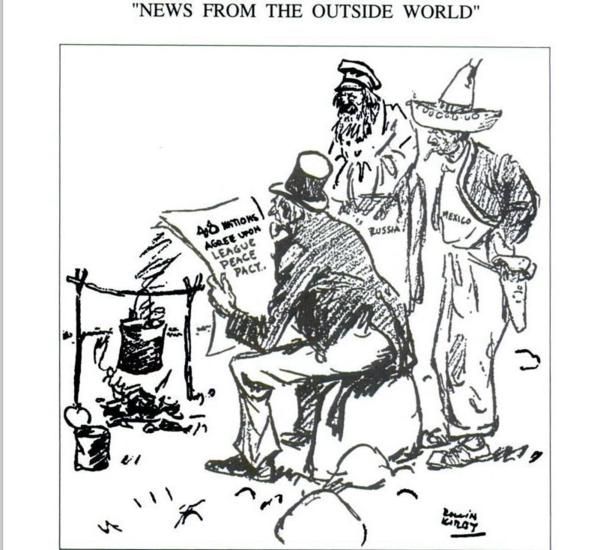I thought it would be an interesting look into our nation's political cartoon history if, this month, I took a look at a different editorial cartoon each day that won the Pulitzer Prize for Editorial Cartooning. Do note that we're talking basically 1922-1967 here, as since then, the Committee has almost always awarded cartoonists generally for their work, not for an exemplary single cartoon. So in many ways, this is a snapshot of American politics (for better or for worse) over a forty-five year period. Here is an archive of the cartoons featured thus far.
Today we look at Rollin Kirby's 1925 award-winning cartoon.
Enjoy!
I featured Rollin Kirby (1875-1952) on A Month of Editorial Cartooning Stars.
Kirby, as I mentioned in that piece, was a direct successor to Robert Minor's delicate art style (a style that Daniel Fitzpatrick would also use) and he was also quite political, just like Minor. The major difference is that Kirby generally tended to be political in a way that would appeal to the mainstream. It's not that the guy didn't have strong views on issues, he just had a way of making his comments in an inoffensive manner, which led to widespread acceptance of his work, and THREE Pulitzer Prizes, including the first one ever awarded.
Today, though, we're looking at the second of three Pulitzer Prizes won by Rollin Kirby, and this one, which appeared in 1924, is referring to one of the great mis-steps in world political history - the League of Nations.
The idea of nations working together to create world policy had been bandied about since the close of the 19th Century, but it was not until the years before (and certainly DURING) the first World War that the great nations of the world actually did begin to work in close concert (yes, nations have always worked together over the years, but never to this degree of close interaction). During the War, British Foreign Secretary Edward Grey came up with the idea of forming an international group of nations when the War ended, so that any future wars could be prevented. United States President Woodrow Wilson thought this idea was brilliant, and he quickly adopted it as a cause.
In early 1918, as the end of the war was seemingly drawing near, Wilson delivered a speech to Congress about Wilson's "Fourteen Points for Peace," and the last one was concerned with the idea of forming a League of Nations. It did not go over so well with Congress, particularly the Republicans. Later in that same year, a cease-fire was called, and the various leaders began working on a peace treaty.
During 1919, Wilson spent most of the year drumming up support for the League of Nations, and in fact, in October of 1919, Wilson actually won the Nobel Peace Prize for his tireless efforts to create the League of Nations, which did, in fact, form in January of 1920 (as part of the Paris Peace Treaty of 1919).
However, the League formed withOUT the United States as members, as Wilson was unable to convince Congress to ratify the move.
Another major nation to refuse to join the League was the Soviet Union, who did ultimately join soon before World War II, but only to stick it to Germany (who had just pulled out of the League). They ended up getting kicked out, anyways.
Mexico also did not join until the early 1930s.
So in 1924, Kirby drew the following cartoon, titled "News from the Outside World," depicting the three nations as bums who are following with interest the goings-on of the "civilized" nations that were part of the League of Nations.
Decent enough cartoon, but again, a pretty safe target.

